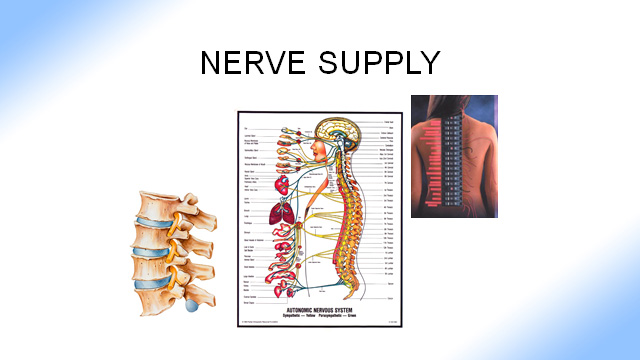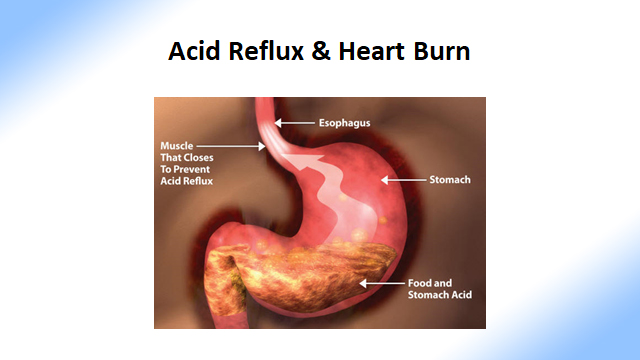Digestion problems: A Shelburne Chiropractor’s Perspective

Digestive problems in Shelburne are growing. Right now 70M Americans have digestive problems, with females being more likely to suffer from them. That is 1:5! Think of all the people you know who may be struggling right now with digestive issues. We have one of the largest wellness clinics in the area so we get to see a good cross-section of the community and what people are struggling with these days. I want to cover what we see as the Big 4: Acid Reflux, IBS, Celiac Disease, and Chronic constipation

Most people try to deal with digestive problems by managing it with either a very restrictive diet or medications, while things may be just getting worse. For example, the common treatment for acid reflux is OTC Prilosec. It turns out that it is only meant to be taken for 14 days and I have people coming into my clinic that has been on it for years! Prilosec’s side effects are much worse than the reflux it is chronically used for. They include:
- Headache
- Abdominal pain
- Irregular heartbeat
- Persistent muscle spasms
- Seizures
- Diarrhea
- Abdominal or stomach pain/cramping
- Fever
- Blood/mucus in your stool.
- Rash, itching/swelling
- (especially of the face/tongue/throat),
- Severe dizziness
- Trouble breathing
We need a better way
Let’s look at our first and now most common symptom:
Chronic Constipation in Shelburne

Like all of these – there is a continuum. Some people notice this more off and on…others struggle with this as the “new normal” - well I am here to tell you that this is anything but normal. Constipation is a serious issue – as I like to say –
“An engine is only as good as its exhaust system.”
So what is happening? This is all about muscles tone just moving food along. The digestive tract is a very sophisticated series of involuntary smooth muscles and like any other muscle, we can end up with tonal issues. Nerves control the movement of food along the digestive tract from mastication (chewing) in the mouth, swallowing which is using voluntary muscle along with involuntary reflexes for the bolus of food to move down the GI tract, all with very specialized tissues in each area and all controlled by what system?
The Nervous System.
The stomach grinds down foods with a specific PH/ acidity of the system and digestive enzymes. The liver and pancreas add digestive enzymes. The healthy lining of GI tract, mucus production. Drawing nutrients and water out of the bowels to reuse again in the body.
What controls all of this every step of the way? The Nervous System.
As food moves along in this process, you can end up with tonal issues. Chronic stress causes stress hormones to slow down the GI tract and interrupts the normal flow through the system resulting in chronic digestive problems for multiple reasons. When we check the nervous system, we typically find that constipation is a neurological stress issue.

Irritable Bowel Syndrome, Inflammatory Bowel Disease, Crohn’s Disease, Celiac
These are characteristic of an inflamed GI tract all the way through. Your digestive tract is simply a very sophisticated hose with 2 openings at each end. Food is not actually inside you until it is broken down and absorbed and metabolized in your body. You have heard: “You are what you eat.” Actually, you are what you absorb not what you eat because it isn’t inside of you until you break it down and absorb it into your bloodstream. Something can go in you and go all the way through you and never be absorbed so it was never inside you.
What determines what comes in and out of you is the wall of the GI tract. It is the health of the lining or inside wall that is involved with the IBS situation. The gut lining is irritated.
Our bodies were designed to work best eating an ancestral diet, and this goes for the digestive tract as well. Modern diets create chronic irritation and can lead to a leaky gut.
Dormant genetic factors can be upregulated when triggered by environmental stresses such as diet or toxicities, or mental-emotional stress can play a role here, and if stress hormones flood the body, digestion will be downregulated. Add a disruption of the microbiome where the healthy good bugs are outnumbered by the harmful gut flora and you have the perfect storm for trouble.
With IBS, IBD, Crohn’s, and Celiac, it is a chemical stress issue.
Acid Reflux, Heartburn, GERD

As modern life gets more and more stressful, we see more and more Acid Reflux. Again it is a combination of factors that come together: chronic social stress, choking down foods that are also crappy foods and being too sedentary, sitting all the time with poor posture.
Here is what happens. When you swallow a bolus of food, it should settle at the bottom of the stomach. There is a sphincter which is a muscular valve at the top of the stomach that keeps this a one-way street; typically; everything should be going in one direction: down. Since the esophagus is merely passing the food to the stomach it has more of a neutral pH, but the stomach that must digest all these proteins has an acidic pH.
The esophageal sphincter is a valve-like trap door that separates the two environments; food comes along, the door opens, the food drops through and the sphincter slaps shut to keep acidic juices of the stomach in the stomach where it churns food around in an acidic soup to break down proteins and fats to digest before it goes out of the bottom pyloric sphincter into the small intestine for further digestion and absorption of nutrients and water further downstream.
In reflux, as the stomach churns food, it refluxes the acidic bolus back up into the neutral environment of the esophagus, irritating the sphincter and esophagus. It is a tonal issue of this one-way valve losing tone so it can’t keep food in the stomach.
So what controls the tone of these valves? The nervous system, and particularly the nerves that come from the mid-back. Chronic slouching or hunching posture not only compresses the abdomen which can push food back up out of the stomach into the esophagus but also causes pressure on the nerves that are in charge of controlling the sphincters causing them to lose their proper tone.
Acid reflux is a physical stress issue.
How We Approach Digestion problems In Shelburne
Over 35 years we have helped more than 10K people get their health back and folks concerned with digestion issues have been among them. When we find someone has digestion problems, our goal is to not only help them resolve the symptoms, but also prevent any further progression, improve function, and provide long-term stabilization.
Identifying the cause is the first step to understanding if we can help. We conduct a thorough consultation where we really listen to what your concerns are, what you have noticed, what you think might be going on and then we become detectives where we uncover all the factors that have accumulated over time to land you where you are right now. Digestive concerns often run in families. There may be similar lifestyle habits that are perpetuated. Genetic variants passed down in families have also been found linked to certain digestion issues.
Next, we will get our hands on your hands and spine with a comprehensive functional, orthopedic, and neurological exam and your body will tell us some things and combined, these will help us determine which additional tests we need to run to get the full picture of what’s going on. We will palpate each individual vertebra to assess its alignment and the curves in the spine as well as to conduct a detailed assessment of the organs of digestion.
There are seven tools we may use to fully understand what is going on and if we can help.
- We may use surface electromyography (sEMG) to identify imbalanced muscle patterns and Dysponesis. Dysponesis is a reversible pathophysiologic state where neurophysiologic reactions consist of covert errors in energy expenditure. Essentially it is describing dis-ease and inappropriate and inefficient adaptation to the stresses one is encountering. These errors can drive poor adaptation to dietary stresses.
- Rolling Thermography (RT) can be used to identify how disruption of the normal nerve supply to the organs, blood vessels, and glands could be contributing to the poor functioning of the digestive system. It identifies dysautonomia, a state of dysregulation of the nerves that control your organs.
- Heart Rate Variability (HRV) identifies specific stress patterns that are perpetuating the problem. You need to be in a relaxed state for digestion to work right.
- We will use brain-based testing to see if you have asymmetric brain patterns that need to be addressed if they are a factor that is driving the dysfunction in digestion.
- Digital Range of Motion (ROM) is used to highlight which areas have fixations and dyskinesia, an abnormality in performing voluntary muscle movements.
- Digital Posture Analysis is used to identify altered proprioception, the inability to sense the precise position, location, orientation, and movement of the body and its parts.
- Digital X-rays: X-rays are invaluable to see inside and to assess if any degenerative conditions have begun. We can refer you to a local facility to obtain the views needed.
Some other factors may also be used to complete the picture, such as genetic test results, nutritional assessments that may uncover inflammatory diet-styles that are feeding the fire of inflammation, postural habits, and functional biomechanics analysis.
Specific Chiropractic Care | Shelburne
Because the central nervous system, your brain, and spinal cord, control your digestion, any interference in the flow of messages between the brain and hands can cause a breakdown in function along the digestive tract.
If the bones of the spine are jarred out of alignment or normal movement from injuries or bad habits like poor posture, too much time spent at computers, tablets, cell phones or other devices, or even just stressed posture, it causes soft tissue damage, leading to inflammation. This is called a vertebral subluxation. This then irritates the delicate nerves which exit the spine. When irritated, your smart body will spasm the muscles around that joint to strap it down to protect it from further harm. It may not sound like it, but a muscle spasm is actually the body trying to protect itself. Really! This lack of movement then causes the discs to deteriorate over time, initiating the process of degeneration as the joints get rusty like an unused door hinge. This is known as osteoarthritis, or degenerative joint disease, which occurs from old traumas or ongoing postural stresses. That’s why it’s important to get regular spinal checkups so we can give it the attention it needs to be fully functional and prevent problems in the future.
Chiropractic care at Wellspring Chiropractic Lifestyle Center in Shelburne focuses on identifying and correcting vertebral subluxations, without drugs or surgery, restoring healthy normal spinal function, and preventing degenerative disc disease in the spine. When the brain gets accurate proprioceptive messages telling it exactly where the body is in space, it has the best chance of controlling the muscles that move the bones so they can be moved into proper alignment to reduce the nerve interference that controls digestion, thereby reducing and even eliminating digestive issues. Correcting spinal subluxations clears the distorted messaging between the brain and the digestive system. If you want a healthy body, you need a healthy nervous system, and if you want a healthy nervous system, you need a healthy spine. Who checks your spine?
Correcting the subluxations is the first step. After that, maintaining that alignment is key to reducing the chances of advancing degenerative changes. Could you ever exercise and get so fit that you would never have to exercise again? Once your digestive system and spine are as healthy as they can get, it will be important to continue to take care of them so you don’t lose the ground you have covered and the gains you have made.
Custom Therapeutic Exercise Plan
We will customize a plan for you based on your functional assessment. This will include showing you the proper ways to move and rest to optimize healthy digestion and spinal alignment. You will be trained in specific exercises to support digestive function and you will learn the best practices for you to stay active without increasing your digestion symptoms.
Our three-legged stool model will help you in the office but also develop a plan for you at home with your individualized exercises and the best practices for changing bad habits into healthy lifestyle habits to prevent problems in the future so you have the best life possible.
Nutritional Support | Shelburne

Our bodies were designed to thrive on an ancient diet since that was when our genes were set. The genes of 40,000 years ago have the same demands in order to have the body function optimally. This includes the foods we eat. Our ancestors would have eaten really high-quality meats: organic, pastured, happy, grass-fed, fertilized eggs, healthy fats, non-starchy vegetables, fruits, nuts and seeds, and water. 70% of our modern diet contains foods that didn’t even exist for our ancestors. This is why cleaning up your diet is so important.

What to stop eating:
- Refined Carbohydrates
- Cereal Grains
- Sweeteners
- Bad Vegetable Oils*
- Legumes
- Dairy Products
- Soda, Juice, and Alcohol
What to start eating
- Non-starchy Vegs.
- Some Fruit
- Meat, Poultry, Fish
- Range fed Eggs
- Natural Fats
- Some Nuts / Seeds
- Drink Water
In order to reconcile the deficiencies of minerals in the soil our food is grown in and the stresses of modern lifestyles that include toxic and deficient processed food diets, we need to not only be eating healthier but also adding foundational nutritional supplements.
We also assess individual nutritional demands with essential tissue-specific nutrients to support the digestive organs to heal faster. Gut flora imbalances may need to be addressed by weeding, seeding, feeding the gut, and healing and sealing it.
At times we need to go even further upstream to evaluate any obstacles coming from genetic variants that are linked to digestive vulnerabilities.

Benefits of Chiropractic Care for Digestion problems in Shelburne
Common conventional approaches are for the most part designed to manage it with medications and dietary and lifestyle restrictions, rather than correcting the cause.
If left untreated, complications from unaddressed digestive issues may include a buildup of toxicities (associated with all-cause mortality), deficiencies, or both. Think about it: our digestive system must provide all the fuel and building blocks for all other body parts, bones, muscles, organs, skin, blood sugar, and the brain. Without a healthy digestive system, we are in trouble.
Benefits of Chiropractic Care
Research shows the following benefits of chiropractic care:
- Reduced pain and discomfort
- Reduced inflammation
- Improved spinal alignment and symmetry
- Improved range of motion
- Improved flexibility
- Increased activity and improved lifestyle
- Improved joint and nervous system function
- Decreased strain on muscles.
- Improved digestive system function including constipation, Crohn’s and acid reflux
Unlike the invasiveness of surgery and the addictiveness of opioids, chiropractic care is non-invasive and non-habit forming. Compared to the costs of surgery, ongoing prescription medications, and the treatment of their side effects, not to mention the increased costs in overall health care for a degenerating spine, chiropractic care is extremely cost-effective.
Frequently Asked Questions
Is a chiropractor in Shelburne good for Digestion problems?
At Wellspring Chiropractic Lifestyle Center, using time-tested safe, gentle approaches, we have helped improve the spinal neural integrity of many members of the Shelburne community including many who are looking to address digestive concerns. By aligning the spine and clearing the nerve interference that allows for better neural control of the digestive system, chiropractic care, along with good nutrition, is one of the most effective ways to correct digestive issues.
Can chiropractic adjustments fix Digestion problems naturally?
Yes, to avoid surgery and chronic use of medication to manage digestion problems, people have had great success with natural approaches like chiropractic care, nutritional support, spinal exercises and improving posture/ and lifestyle habits.
What are the most common digestion problems?
Chronic constipation, irritable bowel syndrome, inflammatory bowel disease, leaky gut, Crohn’s, Celiac Disease, diverticulitis, acid reflux, heartburn and GERD
What problems can digestion issues cause?
Toxicities, deficiencies or both, which can lead to weight gain and metabolic syndrome. Our digestive system must provide all the fuel and building blocks for all other body parts, bones, muscles, organs, skin, blood sugar, and the brain.
What foods help digestion problems?
Our bodies were designed to thrive on an ancient diet, since that was when our genes were set. The genes of 40,000 years ago have the same demands in order to have the body function optimally. This includes the foods we eat. Our ancestors would have eaten really high quality meats: organic, pastured, happy, grass fed, fertilized eggs, healthy fats, non-starchy vegetables, fruits, nuts and seeds and water. 70% of our modern diet contains foods that didn’t even exist for our ancestors. This is why cleaning up your diet is so important.
Key Words: abdominal or stomach pain/cramping, acid reflux, alignment, all-cause mortality, biomechanics,, brain-based chiropractic, brain-based testing, Celiac Disease, central nervous system, chiropractic adjustment, chiropractic care, constipation, diabetes, diarrhea, digestion, digital ROM, digital posture analysis, digital x-rays, dysautonomia, dyskinesia, dysponesis, ergonomics, esophagus, feed, functional exam, gastro intestinal tract, genetic, GI tract, gut flora, heal, healthy lifestyle habits, Heart Rate Variability, HRV, IBS, inflammation, intestines, microbiome, neural self-image, neurological exam, opioids, orthopedic exam, osteoarthritis, palpation, posture, postural analysis, pregnancy, proprioception, range of motion, rheumatoid arthritis, ROM, Rolling Thermography, RT, seal, seed, sEMG, sphincter, spinal exercises, spinal cord, spinal neural integrity, steroids, stomach, subluxation, surface Electromyography, therapeutic exercise, vertebra, vertebrae, vertebral subluxation, weed, weight gain
OFFICE HOURS
Monday
10:30am - 7:30pm
Tuesday
6:30am - 2:00pm
Wednesday
10:30am - 7:30pm
Thursday
6:30am - 7:30pm
Friday
Closed
Saturday & Sunday
Closed
Wellspring Chiropractic Lifestyle Center
4076 Shelburne Road #5
Shelburne, VT 05482
(802) 985-9850


